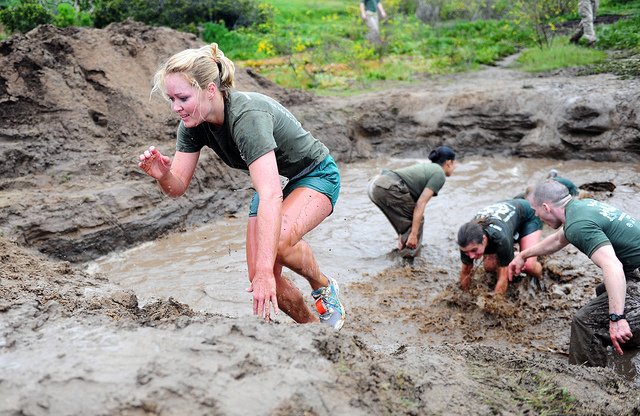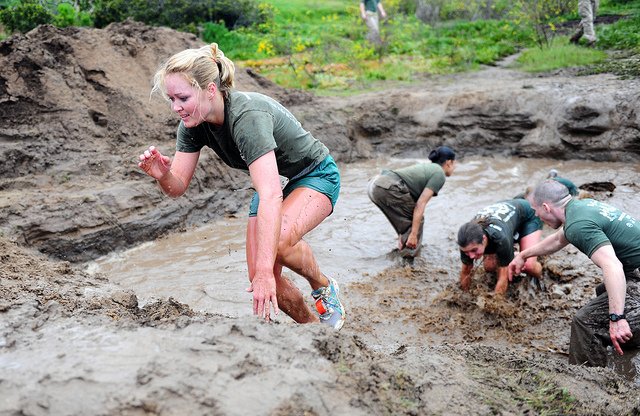
Mud runs have been booming in recent years. If you don’t know what a mud run is, picture a boot camp obstacle course where you drag yourself through pools that resemble raw sewage. Well it turns out they are not as sanitary, or as safe, as they would seem. Who knew mud could be unhealthy?
In the most recent case of a mud run injury, a Dallas woman went temporarily blind in one eye after contracting a flesh-eating bacteria. Brittany Williams had completed her first mud run roughly two weeks before noticing any discomfort in her eye, she told the local CBS station.
“My eye started hurting, like maybe I’ve got mud or some debris in there,” she told the station. “When I opened my eye, it was just like white. The whole room was white.”
Williams said debris cut her eye and allowed a flesh-eating bacteria to destroy her cornea, or in her words, “It just completely melted my eye away.”
Not a pleasant image for a burgeoning adventure sports industry. The Centers for Disease Control in a 2014 report cited 22 cases where mud run participants experienced fever, vomiting and bloody diarrhea. Other injuries including electrocution and drowning have also occurred.
Two participants in a Kansas City event in 2011 died of heat related causes. A Michigan man was paralyzed when he dove into a shallow mud pool. At a West Virginia event in 2013 where a participant drowned 19 others were treated for injuries ranging from heart attacks, hypothermia to electrocution.
Organizers of events such as the Tough Mudder, Warrior Dash and Spartan Race, defend their practices and say they do everything they can reduce or eliminate injury.
“There’s an inherent risk in any of our events and everything is geared toward minimizing risk, as possible,” Tough Mudder spokeswoman Ashley Pinakiewic said in an interview with the Baltimare Sun in 2013. “The entire company is deeply saddened by the accident.”
Williams, who suffered the flesh-eating bacteria recently in Dallas, said her vision will likely return. In the meantime she is faced with more than $100,000 in medical bills.
Photo credit: Flickr Creative Commons








